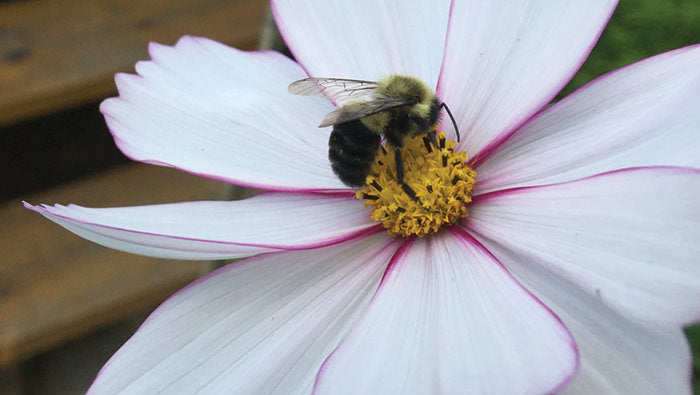
The Five P’s of Successfully Planting Wildflowers
Planning, Preparation, Planting, Persistence, Patience.
Whether you are planning a small corner plot, a wide ribbon swath or a full meadow, planting a wildflower area is more than just scattering seed and watching them flower.
Planning: When planting wildflowers, choose a site that is mostly sunny. Even ‘shady’ blends require at least 4 hours of bright sunlight or 8 hours of filtered sunlight. All seeds need sunlight, water and good contact with the soil to grow and thrive. If you haven’t been able to grow anything in the area before, then wildflowers will not grow there either. You can amend an area by cutting trees and shrubs to allow more sun, add more topsoil and provide irrigation if you are determined. Choose a blend of annuals, biennials and perennial wildflower seeds that are hardy to your area. Maybe include a ‘nurse’ crop of sheep’s fescue to support your wildflowers the first year, like our Meadow Mix.
Preparation: The area should be free of weeds before planting wildflowers. Although many varieties of wildflowers can and will crowd out weeds once established, they need to have a good start. Weed by hand, burn away the weeds with a ‘weed torch’, or use an herbicide to clear the area. Most wildflowers do not need a lot of fertilizer but adding a topdressing of compost will help get them get established early. Sufficient moisture will be necessary for good germination and growth. If nature doesn’t supply it, then you must be prepared to supplement with irrigation, soaker hoses, sprinklers or watering by hand.
Planting: You can plant wildflower seeds spring, early summer, late fall (after the ground freezes) or over the winter. Late fall and over winter is often the best time for planting wildflowers. Many wildflower seeds need a ‘stratification period’ (exposure to cold or freezing temperatures) to germinate. By scattering seed during the cold season, nature supplies the needed stratification, and as the soil warms and moisture increases in the spring, wildflowers follow their natural cycle with little assistance. Scarifying the soil just before seeding will increase the contact of the seed to the soil and improve germination. Scatter the seed according to recommended rates. Adding dry sand, vermiculite, or sheep’s fescue can make it easier to scatter the seed evenly. Avoid overcrowding, it can lead to poor growth. Similar to seeding a new lawn, it’s best to press the seed lightly into the soil (no need to try and cover the seed completely) and water thoroughly.
Persistence – Water and Weed: Newly planted beds of wildflower seeds need consistent moisture to germinate and become established over the first 4 -6 weeks. Plan to water regularly in the beginning. You can help maintain moisture to the area by covering the beds with straw (not hay, it’s full of seeds) or a germination mat used for new lawns. Weeds will love your new wildflower beds too. Regular weeding will be a necessity for the first year & periodically in future years as well. The book entitled ‘Weeds of the Northeast’ is a great resource to help recognize what is a weed and what is a wildflower even in the seedling stage. Once established, most wildflower meadows benefit from a seasonal mowing. This helps scatter the seeds and control some of the more aggressive varieties. Avoid mowing the entire area when plants are winter dormant; some pollinators over-winter in the stems and foliage. Consider over-seeding annual varieties in following years since many popular varieties do not readily self-seed. Wildflowers are not maintenance free, but they can be low maintenance once established.
Patience: Wildflower plantings often take 2 full years to mature. Colors and types will vary and change. Annuals will provide the best color their first year. Biennials and perennials seldom bloom the first season but become more vibrant each following year.
Visit our Wildflower pages for many blends to choose from.
